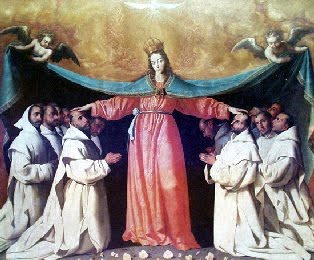 The Baroque composer, Juan García de Salazar spent much of his career at la Catedral de Zamora. He’s quite ambiguous, though, and the listing of him in the New Grove Dictionary of Music and Musicians doesn’t include any of his compositions.
The Baroque composer, Juan García de Salazar spent much of his career at la Catedral de Zamora. He’s quite ambiguous, though, and the listing of him in the New Grove Dictionary of Music and Musicians doesn’t include any of his compositions.The focus of this post is specifically on his work for Vespers of Our Lady. The album saw the light of day because of the efforts of Manuel Sagastume Arregi, a musicologist, who gathered together some of Juan García de Salazar’s extant movements of the liturgical prayer of Vespers and along with some other material created: “Juan García de Salazar: Complete Vespers of Our Lady.”
The album makes use of plainchant borrowed from a Basque hymnal which dates back to the year 1692. The recording was performed by the Basque ensemble Capilla Peñaflorida.
Mostly everything is sung in Latin with the exception of a few sections that are in Castilian Spanish.
All Music Guide reviewed this album with these words: “One can hardly think of a genre more obscure than Basque Baroque sacred music, and the resulting lack of familiarity might serve to scare some potential listeners away. They would be missing out, because everything about Juan García de Salazar: Complete Vespers of Our Lady is glorious and beautiful -- the singing, the ambience of the unnamed cathedral in Villabuena where this was recorded, the instrumental playing, organ, and music. Rather than pulling something out of the mothballs that was better left in the closet, Manuel Sagastume Arregi has discovered through his hard work on behalf of Basque sacred music an entire musical style that should prove a revelation, and a delight, to all.”
You can listen to the various sample tracks here.











